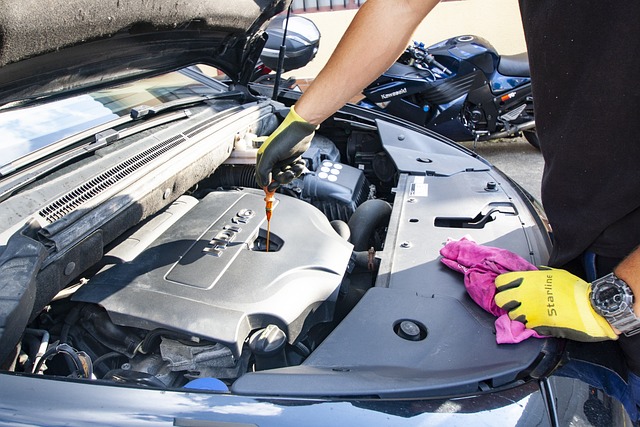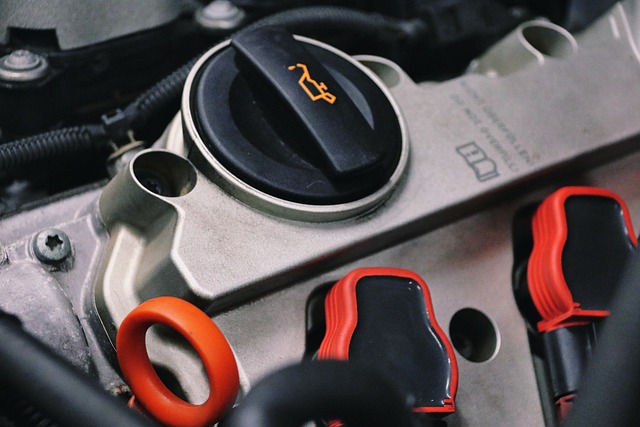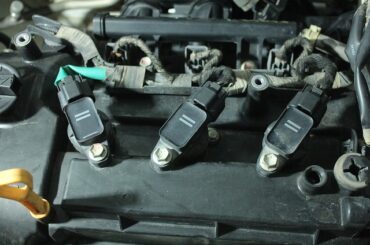Regular oil changes are the lifeblood of your vehicle’s engine, an essential part of routine maintenance that keeps running smoothly. Yet, among the myriad details involved in this process, one often overlooked component takes center stage – the oil drain plug. This unassuming bolt is crucial in the oil change procedure, ensuring the smooth evacuation of old oil and the secure containment of fresh, vital lubricant.
However, one question lingers in conscientious vehicle owners’ and DIY mechanics’ minds: Should I use a torque wrench to tighten my oil drain plug? In this article, we’ll explore the significance of oil changes, the pivotal role played by the oil drain plug, and the merits of employing a torque wrench.
Contents
Understanding the Oil Drain Plug
1. What is the oil drain plug?
– The oil drain plug is a small but vital component on the underside of your vehicle’s engine oil pan. It is typically a threaded bolt or plug that is the gateway for oil drainage during an oil change.

2. Its function in the oil change process:
– The oil drain plug plays a pivotal role in changing your vehicle’s oil. When removed, it allows the old, contaminated oil to flow out of the engine oil pan, adding fresh, clean oil. Essentially, it facilitates the exchange of used oil for new, which is crucial for maintaining the engine’s health and performance.
3. Common materials used for drain plugs:
– Drain plugs can be made from various materials, each with its characteristics. Common materials include steel, aluminum, and brass. The choice of material often depends on the vehicle’s make and model, with aluminum drain plugs being more common in newer cars. These materials are chosen for their durability and resistance to corrosion, ensuring the drain plug’s longevity and effectiveness in maintaining a tight seal.
The Consequences of Incorrect Tightening
Overtightening the Drain Plug:
1. Potential damage to the oil pan:
– One of the most severe consequences of overtightening the oil drain plug is the risk of damaging the oil pan. The oil pan, often made of aluminum or steel, can be prone to cracks or dents when subjected to excessive force. This damage affects its structural integrity and can result in costly repairs or replacements.
2. Risk of stripping the threads:
– Applying too much force when tightening the drain plug can strip the threads on the plug and the oil pan. This compromises the plug’s ability to maintain a secure seal and makes future oil changes a challenging and potentially costly endeavor.
3. Difficulty in future oil changes:
– Overtightening can create a nightmare for future oil changes. If the plug is excessively tightened, removing it may require considerable effort, often involving specialized tools. This can lead to frustrating and time-consuming oil change procedures, increasing the risk of errors or damage during subsequent attempts.
Under tightening the Drain Plug:
1. Risk of leaks and oil loss:
– On the flip side, under-tightening the oil drain plug can have equally detrimental consequences. If the plug is not adequately secured, it may not create a proper seal. This can result in oil leaks, leading to a loss of oil over time. Such leaks can be messy, damage the environment, and pose a safety hazard on the road.
2. Environmental impact:
– Oil leaks due to under-tightened drain plugs can have far-reaching environmental consequences. Spilled oil can contaminate soil and water, harming wildlife and ecosystems. Moreover, it can result in regulatory violations and fines for those responsible, making responsible maintenance all the more critical.
The Role of Torque in Oil Changes
1. What is torque?
– Torque, in mechanics, refers to the rotational force applied to a fastener, like a bolt or nut. It is typically measured in pound-feet (lb-ft) or Newton meters (Nm) and signifies the level of tightness applied to the fastener. In essence, torque quantitatively measures the twisting force that ensures proper fastening.

2. Why is it essential in the context of oil drain plugs?
– Torque is of utmost importance when dealing with oil drain plugs for several reasons. The oil drain plug must be tightened to a specific torque specification to ensure a secure and effective seal, preventing overtightening and under-tightening. It ensures that the plug is neither too loose to cause oil leaks nor too tight to damage the oil pan or strip the threads.
3. How the correct torque prevents damage and leaks:
– Using the correct torque specification, as the vehicle manufacturer recommends, is crucial for maintaining the integrity of the oil drain plug and the oil pan. When the drain plug is tightened to the specified torque, it creates a snug and leak-free seal. This precise tightness prevents oil from seeping out and safeguards against the risk of environmental contamination.
– The correct torque also safeguards against damage. It ensures the plug is secure enough to prevent oil pan damage and thread stripping, reducing the likelihood of costly repairs or replacements. By adhering to the recommended torque levels, vehicle owners can trust a consistent and reliable sealing mechanism that safeguards their engine’s health and the environment.
Steps to Using a Torque Wrench
1. Referencing Your Vehicle’s Manual:
– Start by consulting your vehicle’s owner’s manual or service manual. These documents typically contain the manufacturer’s recommended torque specification for the oil drain plug. This specification is specific to your make and model, ensuring you tighten the drain plug to the required precise level.
2. Cleanliness and Preparation:
– Before considering using the torque wrench, ensure that the area around the oil drain plug is clean and free of debris, old gaskets, or residual oil. A clean surface allows for a proper seal and accurate torque measurement. Take care to wipe down the threads and the oil pan surface.
3. Selecting the Right Torque Specification:
– With the recommended torque specification, set your torque wrench to the appropriate value in either pound-feet or Newton meters. Be sure to use a torque wrench that is calibrated and properly maintained to provide accurate readings.
4. Using the Torque Wrench Correctly:
– Carefully insert the torque wrench’s socket onto the oil drain plug. Begin to slowly turn the wrench in a clockwise direction to tighten the plug. As you approach the specified torque level, the torque wrench will give a distinct signal, such as a click or a beep, indicating that you’ve reached the correct torque. At this point, stop tightening to avoid overtightening.
5. Double-Checking the Torque Level:
– It’s good practice to double-check the torque level by reapplying the torque wrench and ensuring it still reads within the specified range. This ensures that the plug is adequately tightened to the manufacturer’s recommendations.

Following these steps, you can effectively and confidently use a torque wrench to tighten your oil drain plug to the precise torque specification. This practice ensures that your oil change is conducted precisely and minimizes the risk of damage, leaks, or other associated problems.
Should I use a torque wrench to tighten my oil drain plug?
In conclusion, using a torque wrench to tighten your oil drain plug is a resounding “yes.” It’s a critical step in maintaining your vehicle. Overtightening or under-tightening can lead to costly problems, making the precise torque measurement a bridge to prevent damage and oil leaks. Responsible vehicle ownership hinges on proper maintenance, so remember the oil drain plug’s importance and the torque wrench’s value for a safer, eco-friendly, smoother driving experience.
car won’t start just clicks once but lights work
How to Prevent a Blown Rod in Engine 2023
How to Clean a Serpentine Belt: Steps, Precautions, and Benefits





